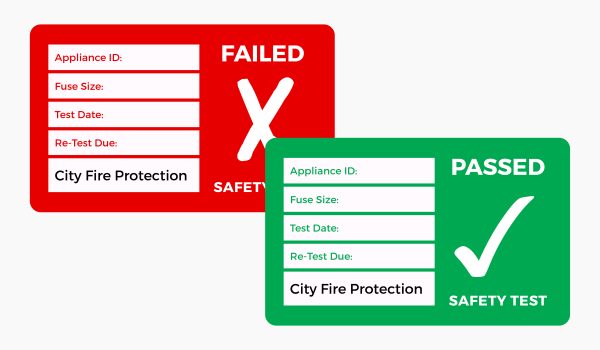Fast & Affordable PAT Testing London

Portable Appliance Testing (PAT) is a critical process that safeguards lives and property by assessing the safety of electrical equipment. In this comprehensive guide, we delve into the significance of PAT testing, its role in preventing electrical hazards, and why it’s a cornerstone of responsible electrical maintenance.
Decoding PAT Testing: Defining Portable Appliance Testing
Portable Appliance Testing (PAT) is a systematic procedure aimed at assessing the safety of electrical equipment that can be moved or plugged into a power source. The primary objective of PAT testing is to identify any potential defects, wear and tear, or other issues that could compromise the equipment’s safety, functionality, and compliance with regulations.
The Importance of PAT Testing: Safety First
Safety is paramount in any environment where electrical equipment is in use. PAT testing plays a pivotal role in ensuring that electrical devices, ranging from office equipment to industrial machinery, meet stringent safety standards. By systematically examining these appliances, PAT testing mitigates the risk of electrical malfunctions, fires, and other hazards that could lead to injuries or property damage.
Compliance and Regulations
Adherence to regulations is a fundamental aspect of electrical safety. Many industries and regions require regular PAT testing as part of their compliance measures. These regulations ensure that businesses, landlords, and individuals take proactive steps to maintain safe electrical equipment. Non-compliance not only exposes individuals to risks but can also lead to legal consequences.
The PAT Testing Process: From Inspection to Peace of Mind
The process of PAT testing involves a series of steps to comprehensively evaluate electrical equipment:
- Visual Inspection: Trained technicians begin by visually inspecting the appliance, checking for external damage, loose wires, and other noticeable issues.
- Testing with Portable Appliance Tester: Specialized testing equipment is used to assess the device’s electrical integrity, insulation, and grounding.
- Earth Bond Test: For Class I appliances, an earth bond test verifies the conductivity of the earth connection.
- Insulation Resistance Test: This test ensures the insulation materials are effectively protecting users from electrical shock.
- Functional Checks: In some cases, the appliance’s functionality is tested to ensure it operates as intended.
Interpreting PAT Results: Peace of Mind through Reports
Upon completion of PAT testing, comprehensive reports are generated for each appliance. These reports detail the inspection process, test results, any defects identified, and recommendations for action. Appliances that pass receive a PAT testing label, signifying their compliance and safety.
Benefits Beyond Compliance
While compliance is a driving force behind PAT testing, the benefits extend beyond meeting regulatory requirements. Regular PAT testing helps in:
- Preventing Accidents: By identifying potential issues before they escalate, PAT testing reduces the risk of electrical accidents.
- Minimizing Downtime: Well-maintained appliances are less likely to malfunction unexpectedly, leading to improved operational efficiency.
- Protecting Reputation: Businesses that prioritize electrical safety enhance their reputation, attracting clients, customers, and tenants who value safety.
The Bottom Line
Portable Appliance Testing (PAT) is a proactive approach to maintaining electrical safety. By meticulously assessing portable electrical equipment, PAT testing safeguards lives, property, and operational continuity. Beyond meeting regulatory requirements, PAT testing is a commitment to responsible maintenance, ensuring that appliances are not just functional but also safe for use. In a world where electrical hazards are a real concern, PAT testing stands as an essential practice for individuals, businesses, and industries alike.
